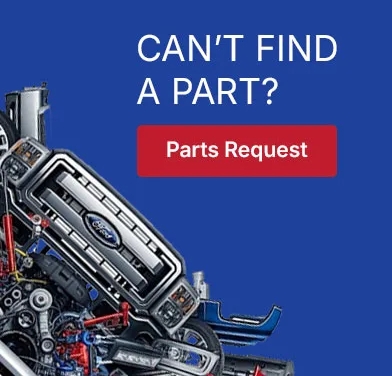How to Diagnose Brake Issues in Your Ford Diesel Truck
Brakes are more than just a safety feature—they’re a lifeline, especially when you’re behind the wheel of a Ford diesel truck. These machines are engineered for heavy-duty applications like towing, off-roading, and hauling, but that kind of power puts immense pressure on the brake system. If your brakes aren’t performing optimally, you’re risking more than a rough stop—you’re risking safety, your cargo, and possibly costly repairs.
Understanding how to diagnose brake issues in a diesel truck gives you the upper hand. Often, worn or failing Ford truck parts are at the heart of braking problems, making early detection essential. You’ll learn how your system works, how to respond to warning signs like a spongy brake pedal or unusual sounds, and when to fix it yourself or call a mechanic.
Understanding How Brake Systems Work in Ford Diesel Trucks
The brake system in a Ford diesel truck is a complex mix of mechanical, hydraulic, and electronic components. It includes the master cylinder, caliper, rotor, brake pads, brake booster, and brake lines—all working together to convert foot pressure on the pedal into stopping force.
Larger trucks may use air brake systems or air brakes in commercial setups, and some models are supported by hydroboost units powered by the power steering pump (often called the PS pump), which multiplies braking power without relying on engine vacuum.
What makes diesel trucks unique is how hard they work. Constant towing, climbing steep grades, and hauling heavy loads wear down brake components faster. The added heat and pressure can damage hard lines along the frame rail.
While car brakes get by with basic hydraulics, trucks often integrate engine braking or exhaust brakes for extra control, requiring regular inspections to stay in top shape.
Common Brake Problems in Ford Diesel Trucks
Brake problems don’t appear out of nowhere—your truck drops hints. Recognizing these signs early can prevent a big problem down the road.
1.Soft or Spongy Brake Pedal
If your brake pedal feels soft or like it sinks to the floor, air could be trapped in the system or your brake fluid may be contaminated. This compromises optimal braking performance and needs a brake fluid flush or bleed to restore normal function.
2.Grinding Noises
Grinding usually means your brake pads have worn completely, letting the backing plate eat into the rotor. That’s not just noisy—it’s a one-way ticket to damaged components and a potential replacement bill.
3.Squealing or Unusual Sounds
High-pitched squeals often mean your pads are getting thin or debris has wedged in the caliper. These noises are easy to ignore at first, but they’re early alarms that something’s off.
4.Brake Warning Light
This dash light can relate to ABS, brake fluid leaks, or low power steering fluid levels if your brake booster relies on the power steering system. Plug into a scanner to identify the exact fault before it escalates.
5.Pulling to One Side When Braking
If the vehicle veers left or right, a caliper may be sticking or one side’s pads are worn unevenly. Not only does this reduce braking power, it makes control unpredictable.
6.Pulling to One Side When Braking
If the vehicle veers left or right, a caliper may be sticking or one side’s pads are worn unevenly. Not only does this reduce braking power, it makes control unpredictable.
7.Brake Fluid Leak
If your brake fluid is low and there’s no obvious reason, check the master cylinder, hoses, and around each wheel for drips. A leak can compromise pressure, leading to sudden brake failure.
Step-by-Step Brake Diagnosis Checklist
Proper brake diagnosis starts with knowing what to look for—and when to look for it. For additional expert guidance straight from the source, check out Ford’s brake service advice to reinforce your inspection routine and keep your truck stopping safely. Here’s a simple diagnosis checklist to follow:
Step 1: Perform a Visual Inspection of the Brake Pads and Rotors
Use a flashlight to check for wear on the pads—anything under 3mm should be replaced. Also look for uneven wear or cracks on the rotors, which can cause vibration.
Step 2: Check the Rotors for Damage or Discoloration
Bluing or deep grooves on the rotor signal overheating or worn pads. These issues reduce friction and make it harder to stop the truck effectively.
Step 3: Inspect the Brake Fluid Reservoir
Open the hood and examine the brake fluid—it should be clear and clean. If it’s dark, it has started to absorb moisture, reducing braking power and calling for a flush.
Step 4: Test Brake Pedal Responsiveness
Push down the pedal—a long pedal or one that feels soft can indicate a leak, air bubbles, or even a failing brake booster. These symptoms mean your system isn’t holding proper pressure.
Step 5: Check for Leaks in Brake Lines and Calipers
Inspect the brake lines, hoses, and around the caliper for any fluid drips. Even a small leak in a hard or flexible line can lead to a big problem if ignored.
Step 6: Use Diagnostic Tools for Deeper Insight
An OBD2 scanner can read ABS fault codes or identify weak spots in the system. A brake fluid tester can detect water contamination that compromises the entire hydraulic network.
Step 7: Follow a Regular Inspection Schedule
After towing, off-roading, or long trips, a visual inspection is a must. Stick to full checks every 12,000 miles or during oil changes to catch small issues before they snowball.
Troubleshooting ABS and Electronic Brake Systems
Modern Ford trucks depend on sensors and control modules to maintain stability and braking performance. If your ABS light pops on, it might just be a dirty wheel speed sensor. Clean it and check the wiring first.
Resetting the ABS is easy—just disconnect the battery—but remember, that doesn’t fix the root issue. If you’re seeing recurring lights or inconsistent brake pedal feel, a scan tool can locate failing sensors or a glitchy control module that needs professional repair.
For more insights on diagnosing critical components in your Ford diesel truck, check out our blog on turbocharger failure signs.
When to Repair vs. Replace Brake Components
Not everything needs a full replacement—some things just need a touch-up. Light rotor warping may be machined smooth, but if they’re below spec, they must go.
Brake pads should always be replaced in pairs across an axle for safety and even friction. Pads may last 30,000–70,000 miles, while rotors and other components depend on wear and usage—especially in heavy duty applications.
And if you’re towing regularly? Upgrading to slotted rotors isn’t overkill—it’s smart maintenance.
How Environment and Driving Habits Impact Brake Wear
Your environment dictates your brakes’ lifespan more than you think. Steep hills, traffic, and even muddy work sites cause wear and trap grit in calipers.
Trucks used in construction or agriculture face exposure to elements that clog and corrode components. Use engine braking downhill to save your pads and keep temps in check.
Tips for Preventive Brake Maintenance
- Follow Ford’s Recommended Maintenance Schedule—Conduct regular inspections every 12,000 miles, checking fluid, pads, rotors, and calipers thoroughly.
- Flush Brake Fluid Every 2–3 Years—Brake fluid can absorb moisture, reducing effectiveness and corroding internal components—a flush prevents this.
- Torque Lug Nuts Properly—Over-tightening causes warped rotors and inconsistent braking power.
- Inspect the Parking Brake—especially if it is used frequently, check the cable for stretch or rust, and make sure it holds the rear wheels securely.
- Do DIY Checks Between Services—A quick visual inspection with a flashlight during oil changes can catch small brake problems before they become major ones.
- Stay ahead of Costly Repairs—Little things like topping off fluid or fixing a minor leak today could prevent a full system failure tomorrow.
Stop Brake Problems Before They Stop You — Shop Hillbilly Auto Supply
Keep your Ford diesel truck running strong with high-quality Ford truck parts and brake components trusted for heavy-duty applications. At Hillbilly Auto Supply, we’ve got the pads, rotors, fluid, and tools you need to fix it right the first time. Don’t wait for a big problem—contact us to order now and drive with confidence.

Jack’s been wrenching since before he could spell “carburetor,” back when his science fair project was keeping a ’79 C10 on the road with nothing but snow in the bed and pure stubbornness. He’s swapped rancid Hyundais for pocket change, sent trucks flying off-road like they were auditioning for a Dukes of Hazzard reboot, and once thawed a diesel tank with plywood, lighter fluid, and what he swears was “innovative engineering.” These days, Jack channels that same hillbilly wizardry into Hillbilly Auto Supply, your one-stop shop for quality used Ford Super Duty truck parts. If it’s built Ford tough, Jack will make it tougher so your Powerstroke rig continues to haul freedom down the highway.


